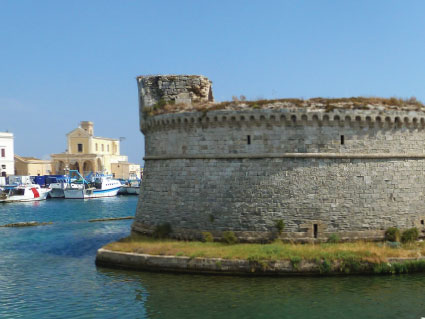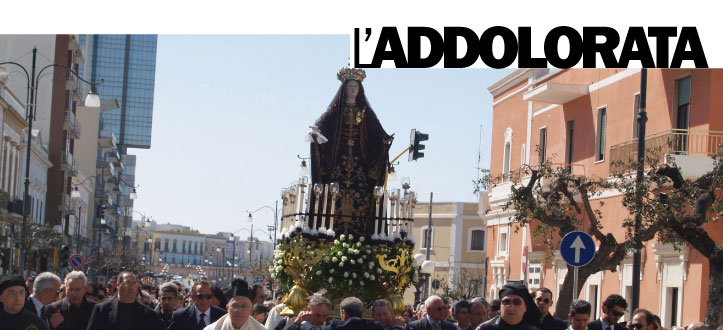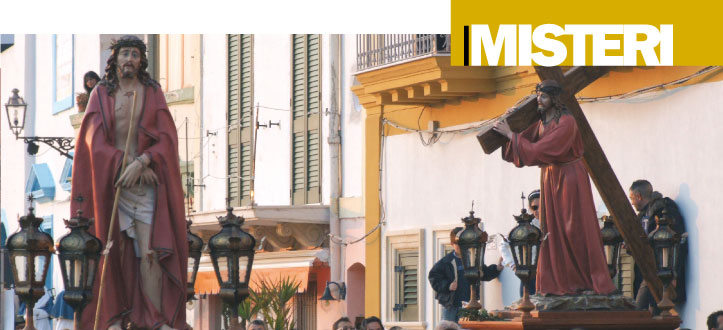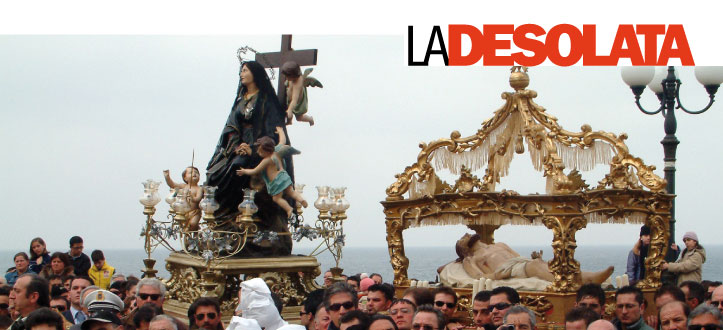





The Procession of Mary, our lady of Sorrows, leaves the church of Santa Maria del Monte Carmelo e della Misericordia (in Via Carmine Fontò) and moves to the cathedral, from where, after the solemn liturgical celebration presided over by the bishop, and the execution of the Holy Oratory, it will move through the whole town. One of the most striking moments is at around 9 o'clock, when after crossing the bridge that joins the new town with the old bank, the simulacrum of the Madonna Our Lady of Sorrows stops on one of the bastions looking over the harbour, and the priest blesses the people and the fishing boats. Then, sadly through the maze of narrow lanes, the procession makes its way back to its church.

The sacristy hosts the statues of the Painful Mysteries, carried in procession from the sunset of the Holy Friday till the first hours of the Holy Saturday together with the so-calld “trozzula”.
This wooden musical instrument, which plays by rotating metal beats, announces with the lamps and the notes of the trumpet and the drum the arrival of procession. The different compositions of the statue of Christ’s sepulchre during the last thirty years are portrayed in an interesting collection of photos also in black and white.
According to tradition, indeed, the theme of Deposition, the representation of Christ’s sepulchre (in local dialect “urnia”), would change year-by-year depending on the model chosen by the confraternity.
The Procession of the Mysteries and Christ’s sepulchre is one of the most moving and striking of the traditional rite: the Confraternita di S. Maria degli Angeli takes part with the image of Our Lady of Sorrows.

As the sun rises at the first hours of Holy Saturday, the procession of the statue of Holy Desolate Mary starts led by the confraternity of S. Maria della Purità.
The procession is headed by hooded brothers, wearing a white hood and a white tunic, a yellow mozzetta with a red belt, followed soon after by the statue of Dead Christ laying in a golden urn and the statue of Holy Desolate Mary. The latter is dressed in mourning clothes and represented as sitting at the foot of the cross: the statue is made of papier mâché and dates back to 19th century.
The procession starts at 3 a.m on Saturday morning when the darkness of the night is ripped by the light of four lamps, by the earsplitting notes of the trumpet, and by the gloomy drum roll. When the two statues meet in front of the church, the atmosphere gets particularly heartbreaking and deeply moving: the sea and the beach in the background provide a touching scenery for the silent and religious crowd of people.